10 ‘What If’ Scenarios that Would Have Changed Philippine History Forever
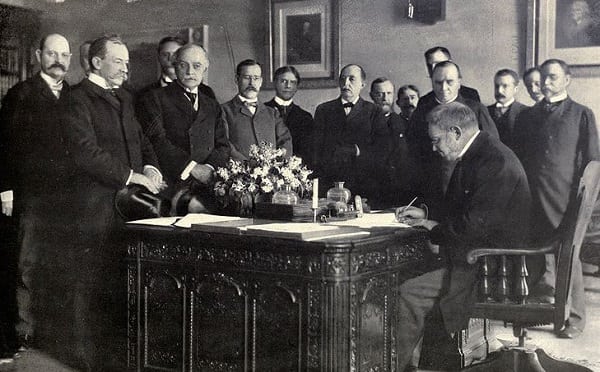
When we think about it, history is full of “what-ifs.” A single change of detail or circumstance could very well alter the outcome of history’s most famous events.
For example, what if George Washington accepted the title of king or became president for life? Or what if Adolf Hitler got accepted as an artist in Vienna? We may never know the exact answer, but it is always interesting to speculate.
It’s also the same for the Philippines. We can only speculate how our history might have turned out if any of these seemingly minor “what-ifs” actually happened. Your guess is as good as ours.
10. Jose Rizal and Josephine Bracken’s son would have lived.
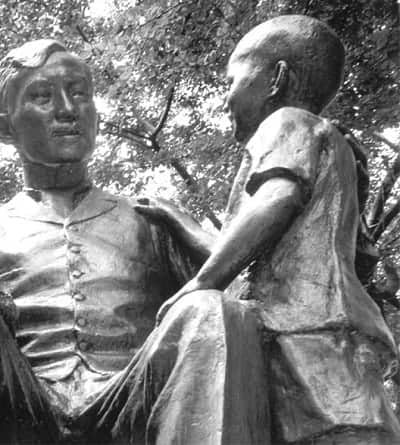
As history would tell us, Josephine Bracken—the common-law wife of Jose Rizal—gave birth to a premature baby named Francisco who sadly died a few hours later.
Intriguingly, it is believed that our national hero himself had been responsible for Bracken’s miscarriage. According to some sources, Rizal played a prank on her during her pregnancy, causing her to hit her stomach on an iron stand.
Also Read: 25 Amazing Facts You Probably Didn’t Know About Jose Rizal
Still, others say that Josephine suffered a miscarriage after engaging in a “violent quarrel” with Rizal. Whatever the real reason behind their son’s death, we can only imagine the things that might have been had Francisco survived.
9. The many attempts to rescue Jose Rizal.
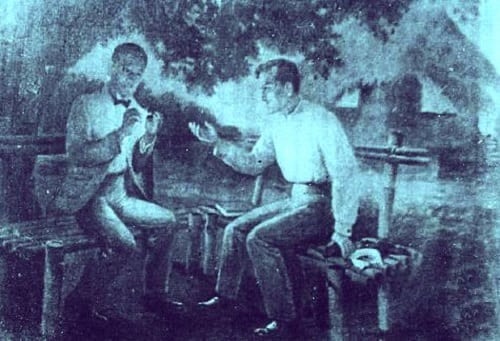
What if Jose Rizal was never executed that fateful day in Bagumbayan? Would he have united the bickering factions of the Katipunan and personally led the Revolution? We may never know the answer—mainly because the four attempts to rescue him never went as planned.
The first attempt occurred during Rizal’s exile in Dapitan, when Dr. Pio Valenzuela tried to convince him to flee and that they had a ship waiting to sail him to Japan. Rizal, however, refused since he promised the Spanish authorities he would not escape.
Did you know? A Poltergeist Haunted Jose Rizal.
The second happened when he was onboard a Cuba-bound ship that had been docked in Manila Bay. Rizal’s would-be rescuers—Andres Bonifacio, Emilio Jacinto, and some Katipunan officers—disguised themselves as sailors, infiltrated the ship and attempted to convince Rizal to go with them. However, he once again rejected the rescue offer.
The third one transpired in Singapore without Rizal’s knowledge, when his Filipino friends hired an English lawyer to file a writ of habeas corpus to have the hero released from the Spanish warship holding him en route to his imprisonment at Fort Santiago. However, the judge denied the petition since their civil courts did not have jurisdiction over the warship.
The last attempt would have occurred during Rizal’s march to Bagumbayan or during the execution itself as Bonifacio and Aguinaldo independently formulated their own rescue plans. However, both were talked out of their attempts by Rizal’s older brother Paciano who said the hero would only agree to be rescued only if needless bloodshed could be avoided.
8. The Spanish nearly captured or killed Emilio Aguinaldo in the Battle Of Imus.
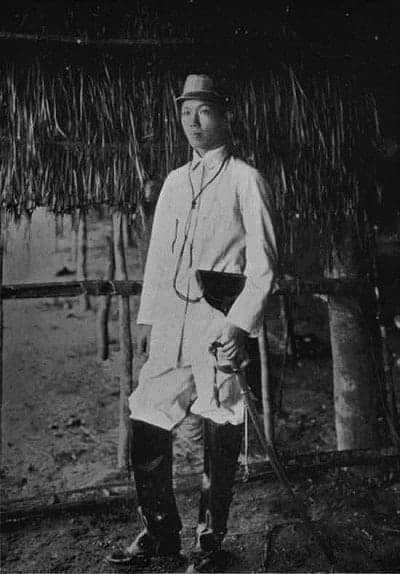
As polarizing as he was, Emilio Aguinaldo was arguably one of the best military tacticians of the Revolution.
Most likely, his premature death or capture during the Battle of Imus—the first big victory of Filipino forces over the Spanish—could have very well led to the collapse of the Revolution (days earlier, the revolutionaries under Bonifacio suffered a crushing defeat in the Battle of San Juan del Monte). Only Aguinaldo’s battlefield savvy and his opponent Spanish general Ernesto de Aguirre’s fatal tactical mistake prevented that.
READ: 8 Epic Battles in History Where Filipinos Kicked Ass
During their fateful first encounter, the Spanish under Aguirre severely mauled Aguinaldo’s own forces. Instead of pressing the attack, however, Aguirre withdrew from the battlefield as he wanted to secure more reinforcements before finally taking the town of Imus.
As a result, Aguinaldo—who survived by pretending to be dead and hiding among the corpses—managed to escape and regroup the Filipino forces. The next time they met, it was Aguirre’s turn to be decisively defeated.
7. The US Senate almost didn’t pass the Treaty Of Paris.
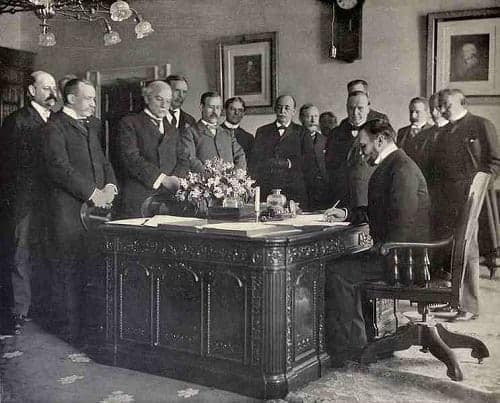
Most Filipinos are familiar with the infamous 1898 Treaty of Paris, the agreement which resulted in Spain selling the Philippines to the United States for the sum of $20 million.
Little-known is the fact that the treaty itself almost never made it out of the US Senate. During that era, many anti-imperialists in the US pointed to the irony of their supposedly democratic country acquiring its own colonies.
Treaty or no treaty, Antonio Luna wanted to attack the Americans first. Read: 13 Facts That Prove Antonio Luna Was An All-Around Badass
Debates about the issue raged back and forth; in the end, the US Senate passed the treaty with a vote of 57 to 27, barely two-thirds of the required margin. In fact, the Senate had been deadlocked before leading anti-imperialist Democrat Senator William Jennings Bryan changed his mind and used his influence with his fellow Democrat senators to vote for the treaty instead.
As to why he made a complete turnaround, Bryan gambled on the treaty being passed so he could criticize President William McKinley—a Republican and his rival for the upcoming 1900 presidential elections—as an imperialist. However, his gambit failed as the American public largely supported their country’s expansionist drive.
Also Read: Philippines was almost renamed “McKinley Islands”
6. The French almost bought Basilan.
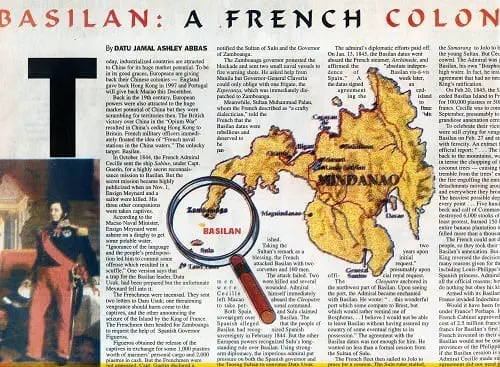
Believe it or not, the residents of Basilan would be speaking Francais today had the French followed through on their plan to purchase the island in 1844.
Eager to secure the resource-rich island and establish a base near China, the French under Admiral Jean-Baptiste Cecille strong-armed the datus of Basilan into signing an agreement declaring Basilan independent from Spain. He also forced the Sultan of Sulu who held sway over Basilan to accept the payment of 500,000 French francs in exchange for the island.
Related Trivia: A Belgian king almost bought the Philippines from Spain.
During this time, both local and foreign personalities opposed this transfer. One datu named Usak continuously harassed French ships. The Spanish lodged a formal protest with the argument that Basilan formed part of the Philippines. The British, on the other hand, sent their warship as a show of support for the Sultan of Sulu.
In the end, it was the French King Louis Philippe who called off the deal which had already been approved by their Parliament. His reason? He didn’t want to hurt his chances of marrying a Spanish princess.
5. Japan would have invaded the Philippines before World War II.
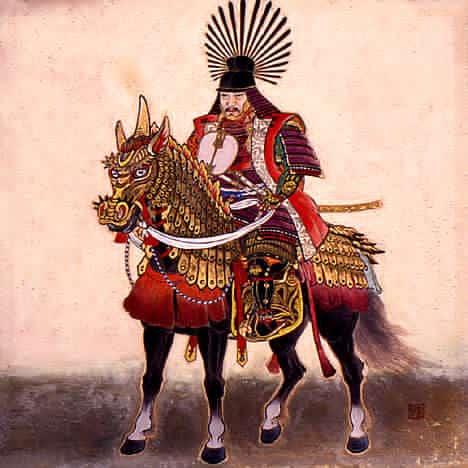
More than three hundred years before World War II, the Japanese had already been planning to expand their territories to include China, Korea, and the Philippines.
At the time, the man who led them was none other than the great Toyotomi Hideyoshi. As the successor of Oda Nobunaga and the predecessor of Tokugawa Ieyasu, Hideyoshi was a very ambitious militarist who saw foreign wars as a way to unify his country and consolidate his rule.
READ: 10 Biggest Misconceptions About World War II In The Philippines
To that end, he organized an expedition to Korea with the eventual aim of also occupying China. With regards to the Philippines, he demanded that the Spanish pay a tribute or be invaded. In fact, were it not for his pre-occupation with Korea, Hideyoshi would have very well invaded the archipelago since the Japanese merchants who went back and forth to the archipelago to trade had told him of the country’s riches.
To appease Hideyoshi, the Spanish sent several envoys to try and negotiate with him. In the end, his untimely death caused by bubonic plague in 1598 staved off the threat of invasion. Although Hideyoshi’s successors, the Tokugawas, hatched their own schemes to take over the country, no actual invasion would commence until World War II.
4. Ramon Magsaysay and the invitation to stay overnight in Cebu.
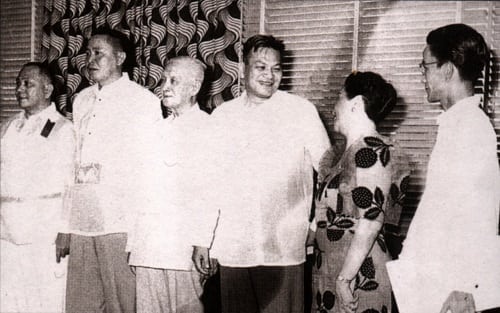
Arguably one of the best presidents we ever had, Ramon Magsaysay’s untimely death due to his plane crashing into the slopes of Mount Manunggal, Cebu on March 14, 1957, shocked and brought the entire nation to tears. And although the official cause of the crash has been attributed to a mechanical problem, the bigger question remains: could Magsaysay have possibly avoided death that fateful day?
READ: 6 Reasons Why Ramon Magsaysay Was The Best President Ever
We may never exactly know the answer, but we do know that he had been invited twice to spend the night in Cebu instead of flying out at midnight. One of the invitations came from Mayor Sergio Osmeña Jr.; however, Magsaysay politely turned down both, reasoning that he had to go back to Malacañang to get some work done early.
In fact, another C-47 plane had been commissioned to wait for Magsaysay’s entourage who had opted to stay overnight in the city. In a cruel irony, Magsaysay’s tireless work ethic proved to be his very undoing.
3. The US seriously considered resettling African-Americans here.
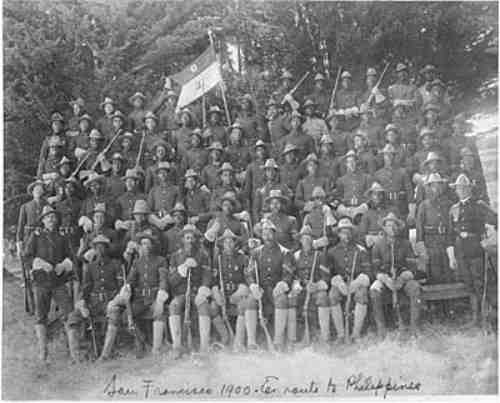
Aside from its expansionist campaigns, another controversy that hounded the US was its discriminatory treatment of its own African-American citizens.
Although the American Civil War of 1861-65 had effectively abolished slavery and granted them citizenship, black people still suffered discrimination. In fact, many segregationist politicians and advocates actually called for African-Americans to be relocated in the faraway territories the US had acquired, the Philippines being one such area under consideration.
According to the foremost relocation proponent Alabama Senator John T. Morgan, the plan would bring back black people to their “natural” habitat and finally solve the “negro problem” in the US. At the same time, he argued that black people could serve as role models to the Filipinos by showing them the benefits of being under American rule.
Also Read: The African-American soldier who defected to Emilio Aguinaldo’s army
Probably the only thing crazier than the proposal was the fact that US President Theodore Roosevelt actually sent a commissioner to the archipelago to conduct a feasibility study. Although the commissioner later returned with a positive report, the plan was never carried out.
For one, Governor-General William Howard Taft remarked that even the Filipinos considered themselves superior to black people. Second, those who opposed the plan pointed to the financial and logistical nightmare if it was ever carried out. Lastly, it was technically illegal to relocate the African-Americans since they were US citizens and could not be forcibly shipped out without their consent.
2. MacArthur almost didn’t liberate the Philippines.
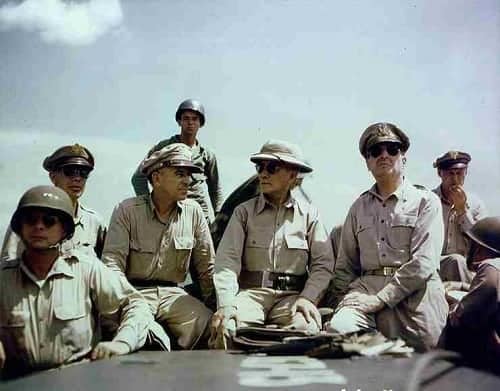
Would the Japanese still have surrendered? Would the massacres and bloody battles fought in places like Mindanao and especially in Manila have been avoided?
Those are just but only two of the numerous questions we can put up if General Douglas MacArthur never went back and liberated the Philippines. In fact, he almost never did.
During the later stages of World War II, the Americans had been steadily beating back the Japanese. Using the “island-hopping” strategy, US forces would isolate heavily-guarded Japanese bases in the Pacific by taking only the strategically-located areas that could support the bombardment and eventual invasion of Japan itself. As a result, these isolated Japanese garrisons were rendered largely useless.
Manuel Quezon reportedly paid MacArthur $500,000 during the war. Find out why: 15 Mesmerizing Facts About President Manuel Quezon
Originally, MacArthur’s colleagues wanted to invade just Mindanao or even bypass the archipelago in favor of occupying Formosa (Taiwan) and Okinawa, with the argument that it would hasten their race to Japan. However, MacArthur successfully petitioned President Franklin Roosevelt to endorse his plan during a conference with the top brass in Pearl Harbor in 1944.
He argued that it would hurt Roosevelt’s re-election chances (he was campaigning for his fourth term at the time) if they backed out of their promise to liberate the country. Aside from that, he pointed out that the Japanese Navy—although depleted of their aircraft carriers—still possessed powerful battleships that could threaten their positions were they to bypass the archipelago. In the end, the charismatic MacArthur convinced Roosevelt and his colleagues to go along with his plan.
1. Magellan nearly never made it to the Philippines.
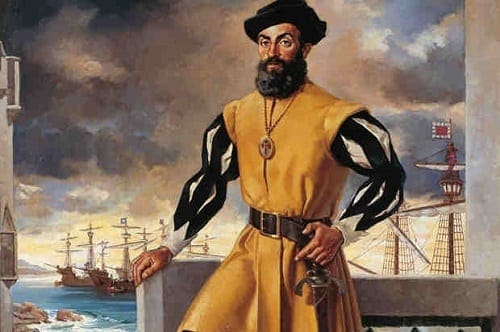
Aside from the fact that Portuguese explorer Ferdinand Magellan never made it out of the country alive, he also almost never arrived here in the first place.
Before he set off on his expedition, Magellan fell out of favor with his King Manuel I after he switched sides and became an explorer for the Spanish (ironic, since the king himself refused to finance Magellan’s expeditions several times).
Reportedly, Manuel I arranged to have Magellan assassinated which caused the Spanish king to assign him bodyguards. Aside from the assassination attempt, Manuel I also sent agents to try to convince Magellan to abort his expedition. Finally, he also dispatched navy ships to chase after Magellan when the latter started his voyage in 1519.
Magellan wasn’t the first to circumnavigate the globe. Find out who:
5 Historic Lies You Were Taught In School
However, the Portuguese king wasn’t the only one who wanted Magellan’s head. His mostly Spanish captains and crew resented the fact that aside from being Portuguese, Magellan could be very strict and dictatorial, spurring them to commit a series of mutinies. In the most serious one which took place on April 1520 at Puerto San Julian, Argentina, Magellan nearly even lost three of his five ships. Fortunately, he managed to subdue the mutineers and retain control of his fleet.
In the end, fate smiled on Magellan as he finally reached the archipelago a year later. The rest, as they say, is history.
References
Alburo, E. (2001). SUMAD: Essays for the Centennial of the Revolution in Cebu. Manila: De La Salle University Press.
Campo, L. (2013). Remembering the crash that killed Pres. Ramon Magsaysay. [online] philSTAR.com. Available at: http://goo.gl/l5wKQw [Accessed 5 Nov. 2014].
Flores, W. (2013). Gordon on cousin Cardinal Tagle as first Asian pope & their revolutionary ancestor. [online] philSTAR.com. Available at: http://goo.gl/9xdTCb [Accessed 5 Nov. 2014].
Official Gazette of the Republic of the Philippines, (1957). President’s Month in Review: March 16 – March 31, 1957. [online] Available at: http://goo.gl/66aB0N [Accessed 5 Nov. 2014].
SparkNotes, (n.d.). The Spanish-American War (1898-1901). [online] Available at: http://goo.gl/V19yY3 [Accessed 5 Nov. 2014].
Villanueva-Ong, Y. (2011). The hero and the man. [online] philSTAR.com. Available at: http://goo.gl/dV8Q6g [Accessed 5 Nov. 2014].
Additional Sources
Errante Golondrina: The Life and Times of Josephine Bracken by Macario Ofilada
Popularizing Rizal in Briefs By Edgar Valencia Rosero
Doctor Jose Rizal and the Writing of His Story by Maria Stella S. Valdez
My Country and My People by Myrna O. Carpio and Amparo C. Sunga
His Life, Works, and Role in the Philippine Revolution b y Jose P. Rizal
Revolutionary Spirit: Jose Rizal in Southeast Asia by John Nery
Almanac of American Military History, Volume 1 by Spencer Tucker
Swish of the Kris, the Story of the Moros, Authorized and Enhanced Edition by Vic Hurley
Terrorism in the Philippines: The Bloody Trail of Abu Sayyaf, Bin Laden’s East Asian Connection by Dirk J. Barreveld
The East Asian Mediterranean: Maritime Crossroads of Culture, Commerce and Human Migration by Angela Schottenhammer
50 Military Leaders Who Changed the World by William Weir
They Need Nothing: Hispanic-Asian Encounters of the Colonial Period by Robert Richmond Ellis
One Into Many: Translation and the Dissemination of Classical Chinese Literature by Leo Tak-hung Chan
Japan and South East Asia: From the Meiji Restoration to 1945 by Wolf Mendl
RM: A Biographical Novel of Ramon Magsaysay by Allyn C. Ryan
Race and U.S. Foreign Policy in the Ages of Territorial and Market Expansion, 1840-1900 by E. Nathaniel Gates
God’s Arbiters: Americans and the Philippines, 1898-1902 by Susan K. Harris
The Oxford Companion to American Military History by John Whiteclay Chambers, Fred Anderson
MacArthur: America’s General by Mitchell Yockelson
Council of War by Steven L. Rearden
Generals of the Army: Marshall, MacArthur, Eisenhower, Arnold, Bradley by James H. Willbanks
Battle of Surigao Strait by Anthony P. Tully
The Last Epic Naval Battle: Voices from Leyte Gulf by David Sears
Ferdinand Magellan and the Quest to Circle the Globe by Samuel Willard Crompton, William H. Goetzmann
Magellan’s Cross by Richard J. Field
Who Was Ferdinand Magellan? by S. A. Kramer
The Borough of Licab by George F. Esguerra
1494: How a Family Feud in Medieval Spain Divided the World in Half by Stephen R. Bown
FilipiKnow
FilipiKnow strives to ensure each article published on this website is as accurate and reliable as possible. We invite you, our reader, to take part in our mission to provide free, high-quality information for every Juan. If you think this article needs improvement, or if you have suggestions on how we can better achieve our goals, let us know by sending a message to admin at filipiknow dot net
Copyright Notice
All materials contained on this site are protected by the Republic of the Philippines copyright law and may not be reproduced, distributed, transmitted, displayed, published, or broadcast without the prior written permission of filipiknow.net or in the case of third party materials, the owner of that content. You may not alter or remove any trademark, copyright, or other notice from copies of the content. Be warned that we have already reported and helped terminate several websites and YouTube channels for blatantly stealing our content. If you wish to use filipiknow.net content for commercial purposes, such as for content syndication, etc., please contact us at legal(at)filipiknow(dot)net
